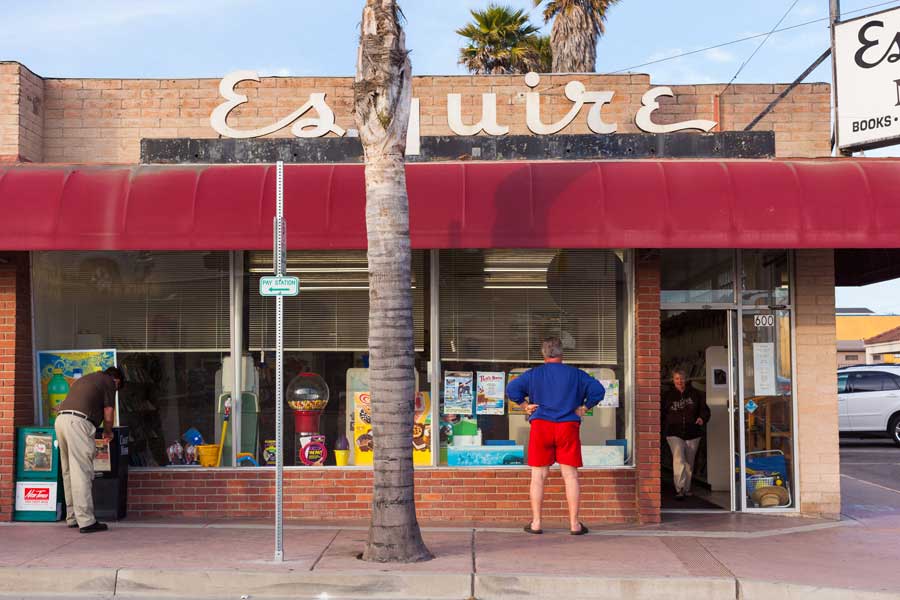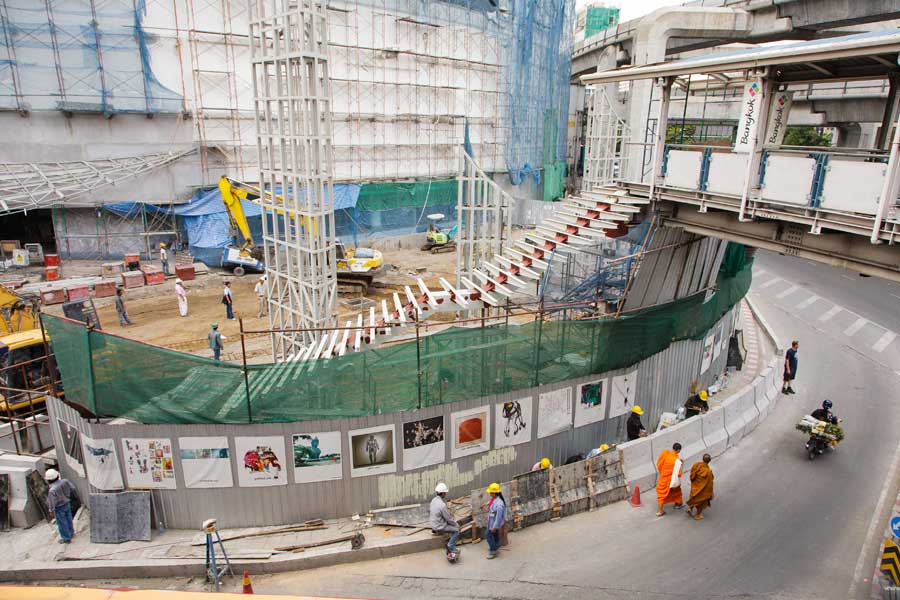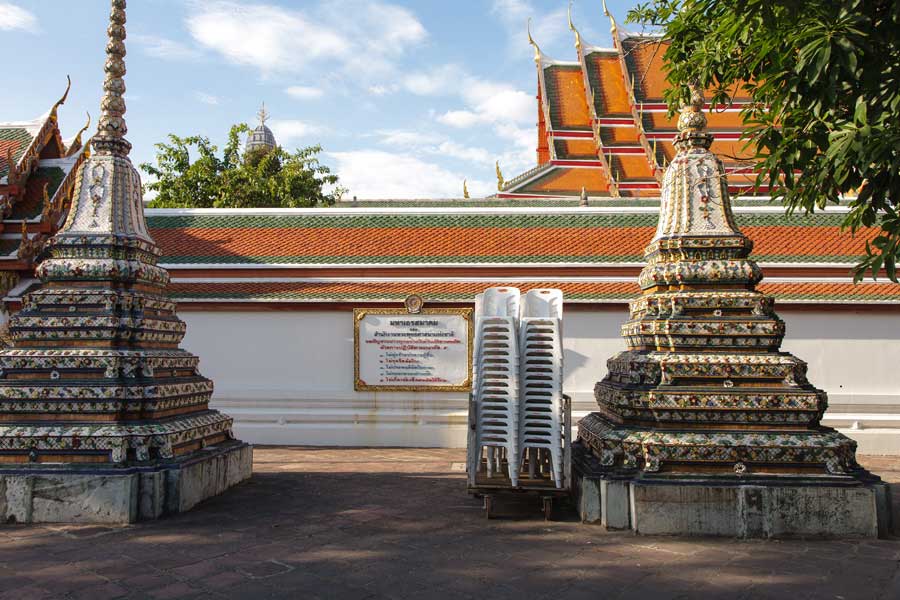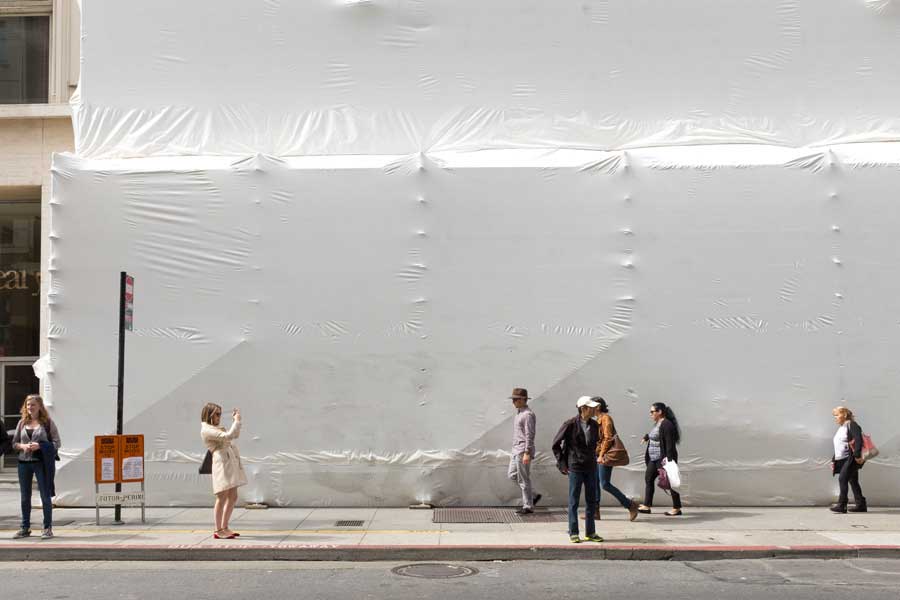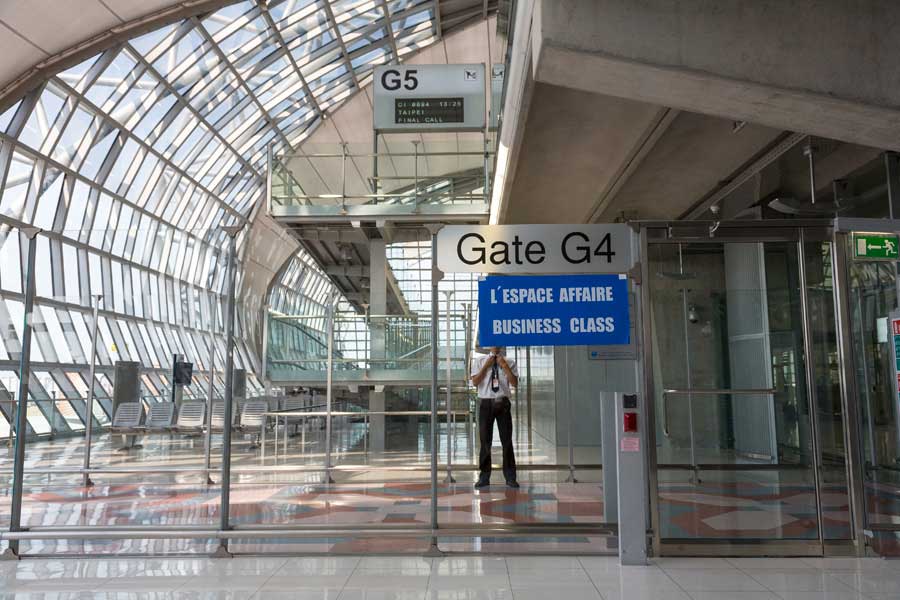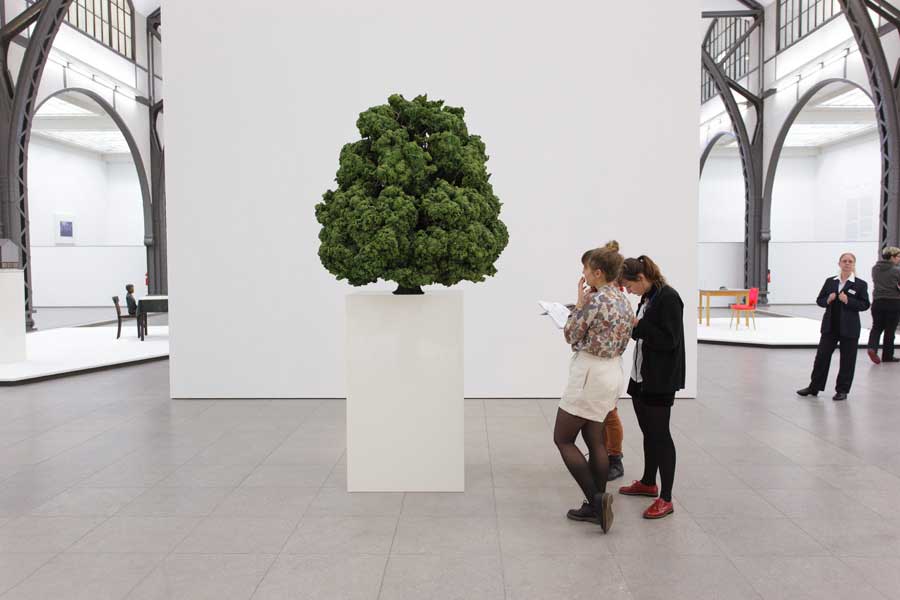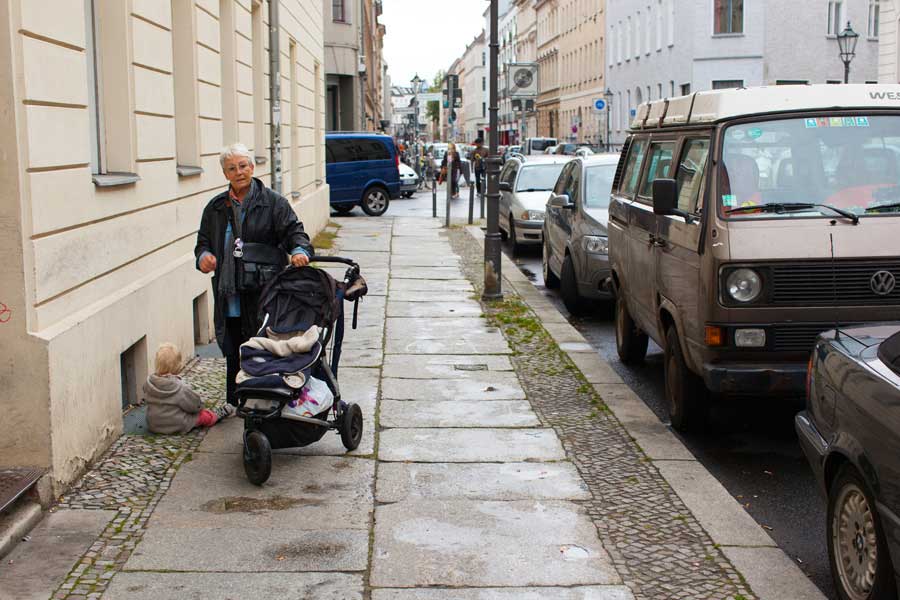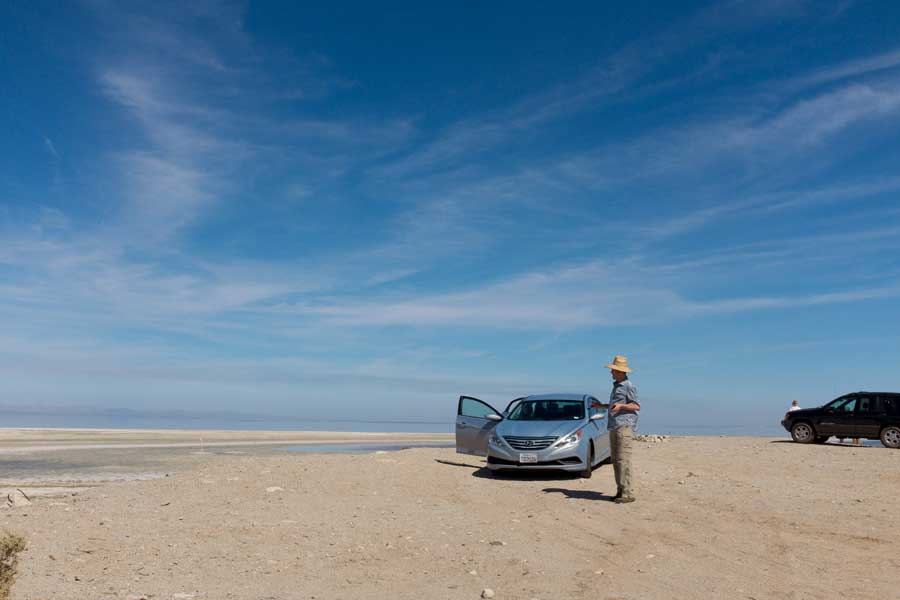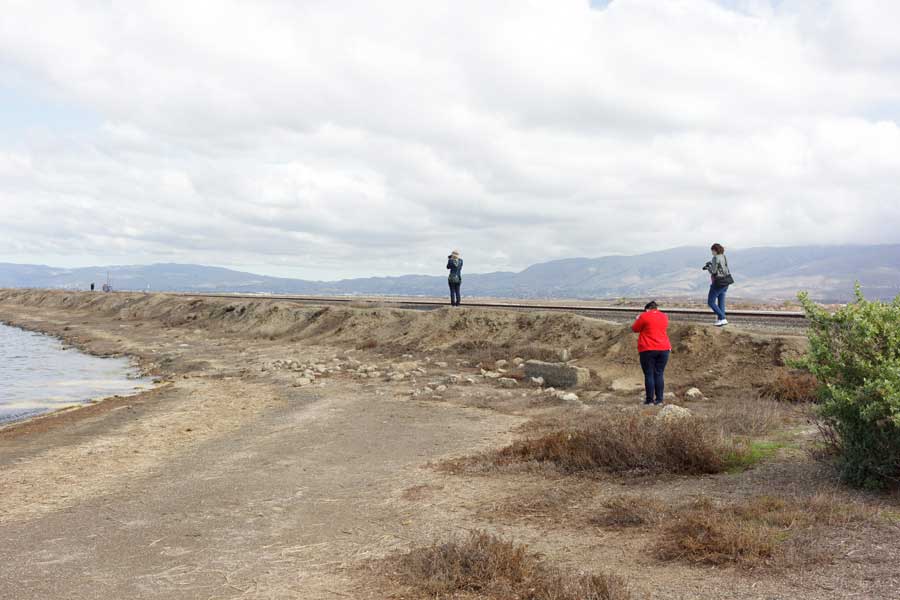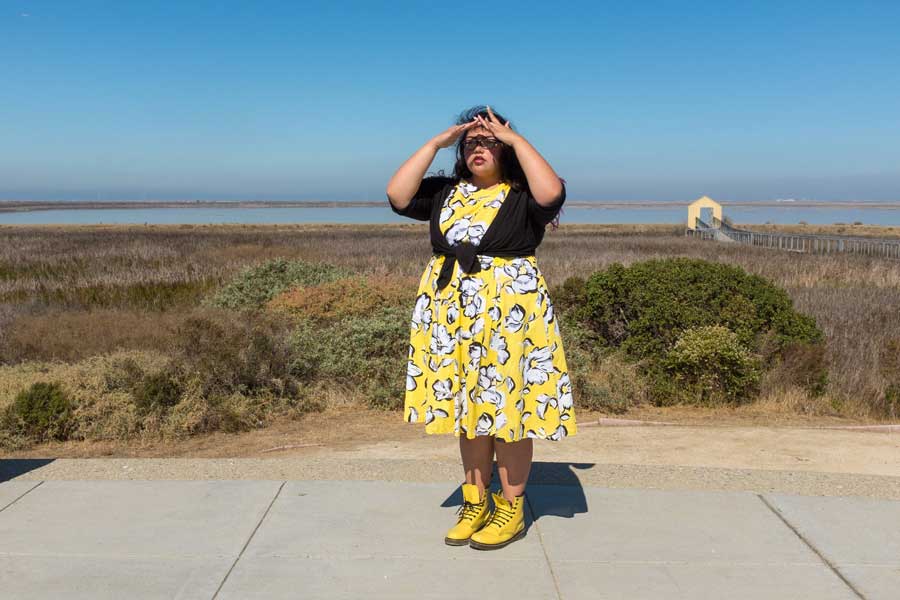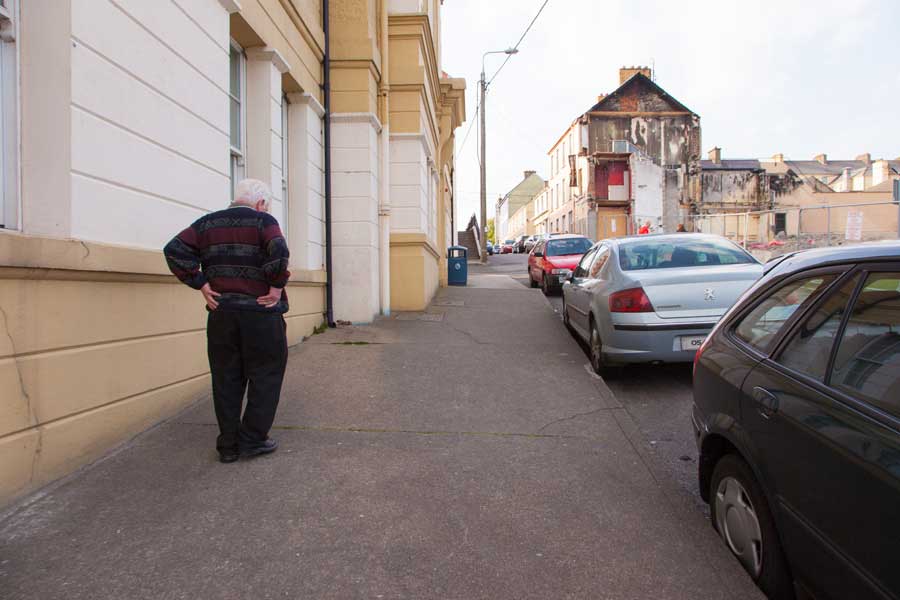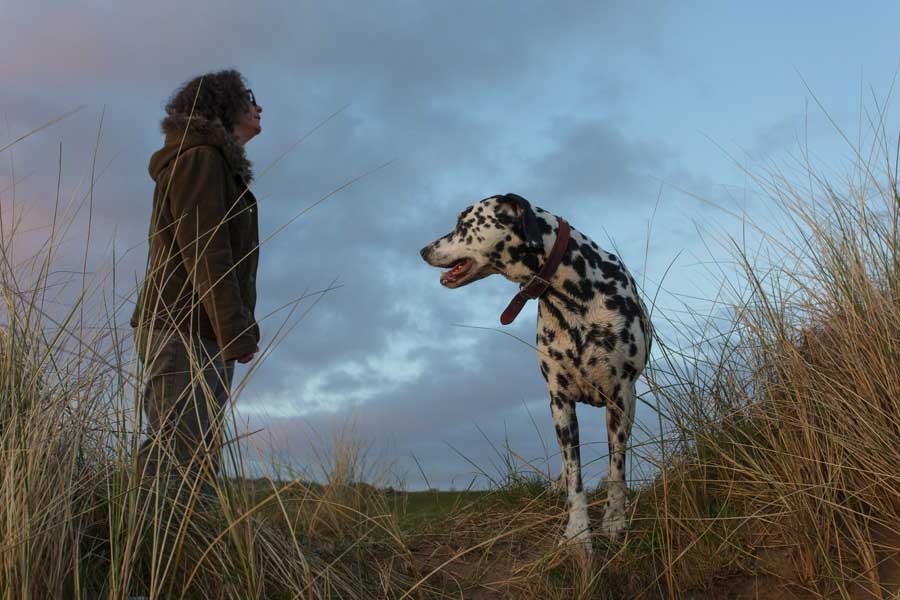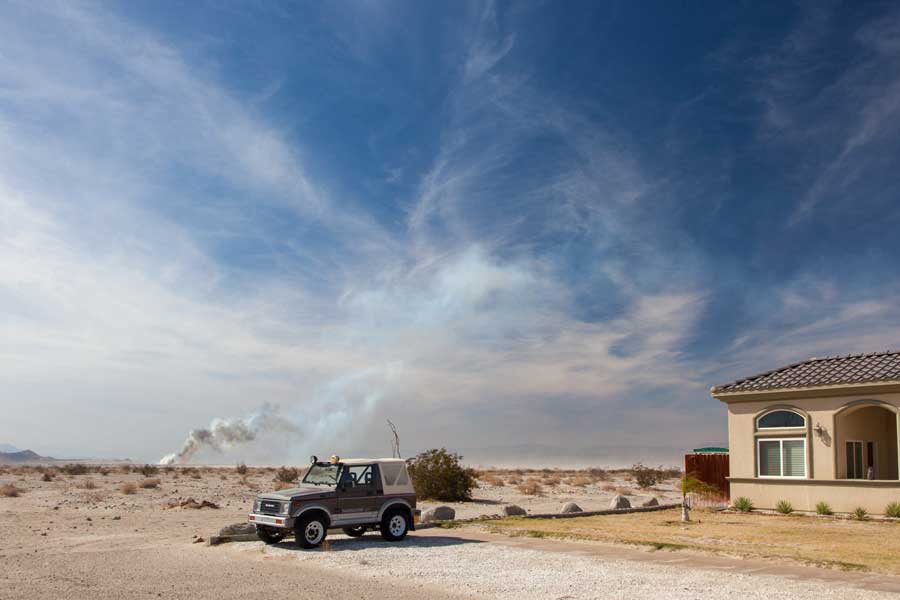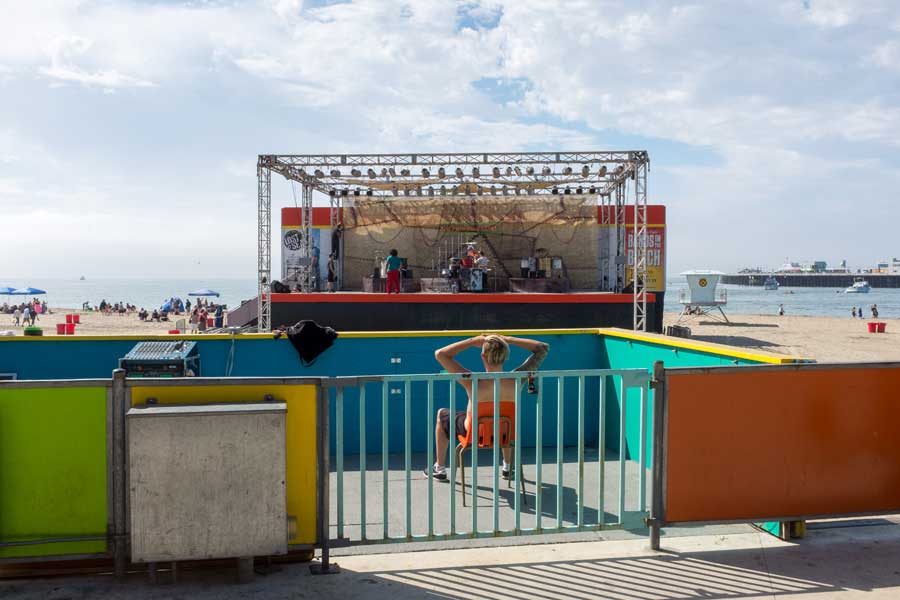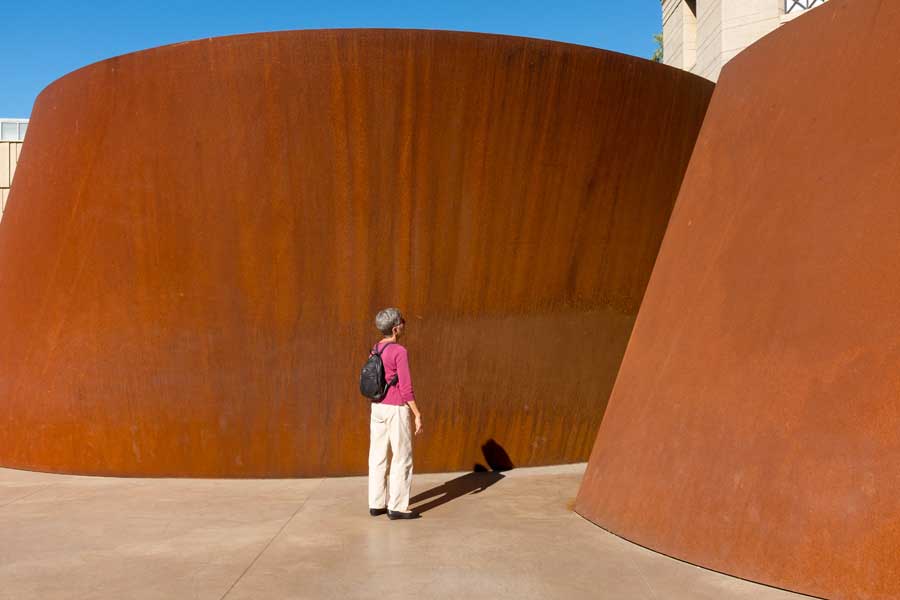During the past several years, I have been primarily interested in what could best be termed public spaces – interiors, such as libraries or club houses, or urban scenarios that unfold in public squares, zoos etc.
I have documented and explored the architecture and activities of public spaces such as fairgrounds, city parks, cultural festivals, and street parades in America, recreational facilities and shopping arcades in Ireland, shopping centers and apartment buildings in London, city squares and courtyards in Paris, and bureaucratic spaces abandoned by the Communist government in the former East Berlin.
These photographs of public spaces are often sober and frugal in feel because I avoid any spectacle or dramatization in the locations. The emptiness is saturated with a subtle attention to color, and the prevailing silence instilled with a vernacular yet metaphysical quality. They are travel pictures yet they do not identify the place by cultural or historical details as much as use their particulars to investigate a detached, disembodied slice of time. The detachment makes the familiar strange to us.
At the same time, on a parallel track, I turned the camera inward, finding subject matter, and meaning, in everyday circumstances. I photographed immediate family and friends, annual rituals such as soccer-themed birthday parties in Pleasanton, backyard landscape design in Fresno, and banal pastimes such as watching television. While the calculated design of these images is similar to that of public spaces, they prove that while photography has the ability to evoke the unique person who resides in each human body, it is equally capable of recording everything and revealing nothing. While making these photographs, I rediscovered one of the oldest and most rewarding pleasures of photography – the patient study of details too small, too incidental, or too overwhelming to have been noticed at the moment of exposure.
My photographs can make us feel very uncomfortable. They make a comedy about the food we eat, the clothes we wear, and the places we go. The photos scrutinize the very way we live our lives. It could be said that the pictures exploit our lack of good taste and good judgment by picturing it all in the brightest of colors, exposing our petty vanities to the world.
Another point of view is that the pictures merely record a myriad of social ills, the loosening of community ties, the mass embrace of consumerism, the manic pursuit of leisure and tourism, and the phantasmagoria of the middle class.
Perhaps I am, like many suburban children of the 50s and 60s, an outsider, belonging nowhere, with no allegiances and hardly any preferences. Unlike the classic image of the urban street photographer, I did not grow up confronting a legacy of bad social engineering and poor quality building. I grew up in the monotonous comfort of suburban tract homes and identical strip malls.
I am also, like many of my contemporaries, a product of a cultural revolution in which opportunities of an academic photographic education became available to a far wider range of the American population than ever before, and in which enlightened attitudes to art began to encompass the “democratic” arts of photography, video, and film making. I use photography to express ideas about art and culture rather than create a record of the world around me. I married my urge to document with a fascination with social behavior. I am captivated by the idea of preference and taste – what makes people chose each other, the idiosyncratic way in which domestic interiors are created, and why we follow tradition when their original rationale has long since disappeared.
This photography is essentially a reflection of intense curiosity, deriving much from the straight photography that influenced me during the 1980s and 90s – Garry Winorand, Nan Goldin, and Martin Parr, along with the earlier conceptual photography of Richard Prince, Sherrie Levine, and Cindy Sherman. I also find inspiration in the artificial saturation of picture postcards as well as the anonymous family snapshots found at the corner antique store. While my approach may be seen as socially transgressive, I feel that the photographs have a robustness and variability that transcends a theoretical or political debate. To me, the pictures are a carefully honed collection of aesthetic devices that are used not just to define a social point or to underline a cultural statement, but for their own sake, in celebration of photography’s spectacle as a still, two-dimensional image acting as a mirror to the way we all live. [Official Website]



